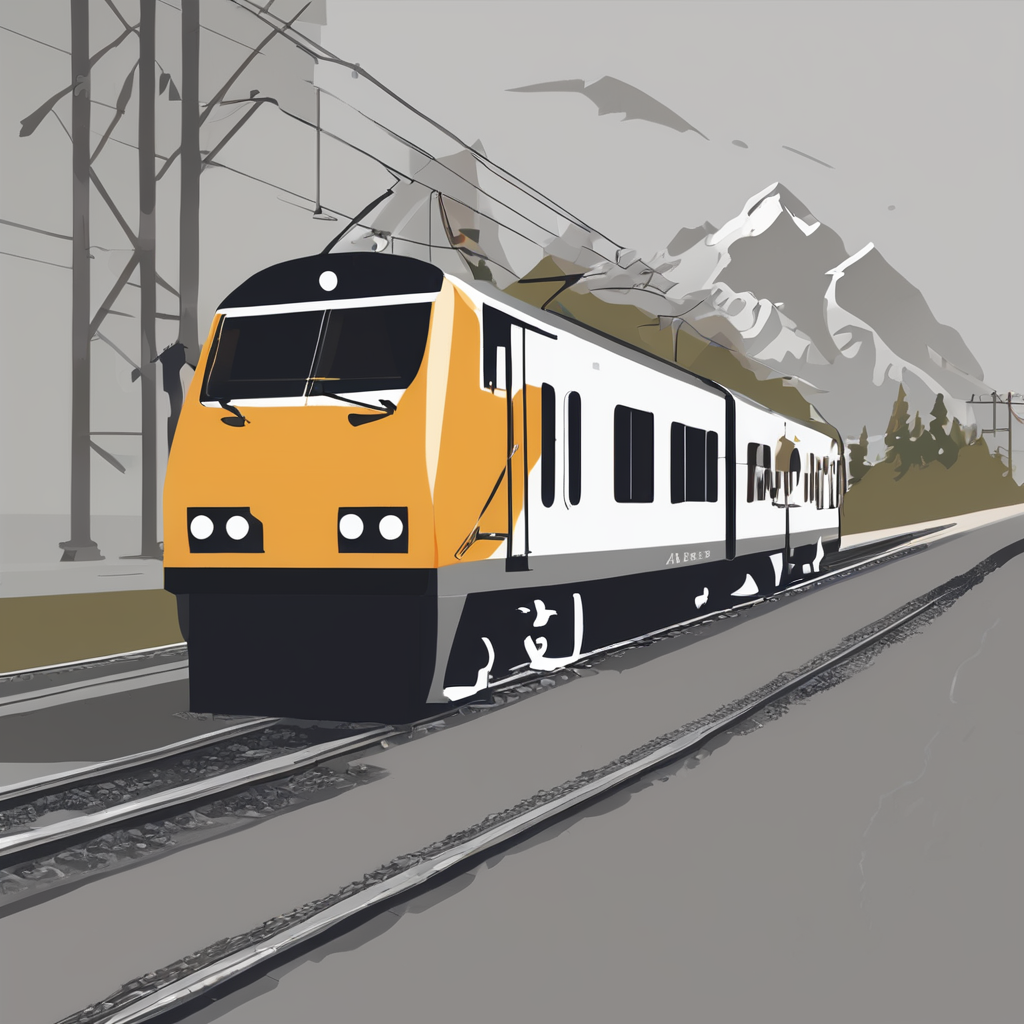Understanding Lane-Keeping Assist Technology
Lane-Keeping Assist is an advanced vehicle safety technology designed to enhance driving assistance features. This system assists drivers in maintaining their vehicle’s position within a designated lane, ultimately reducing the risk of unintentional lane departure. The technology utilises sensors and cameras to monitor lane markings on the road, autonomously steering the vehicle back into its lane if it begins to drift.
The benefits of Lane-Keeping Assist technology are especially notable for rural driving. Roads in these areas often have less defined lane markings and can be winding, making it challenging for drivers to maintain consistent lane discipline. By providing subtle steering adjustments, Lane-Keeping Assist helps ensure a smoother and safer driving experience on these roads.
Have you seen this : Maximize Your Parking Precision: Tips for Ensuring Your Vehicle’s Parking Assist Thrives in Narrow UK Spaces
Comparison among vehicle models reveals key differences in implementation of Lane-Keeping Assist systems. Some manufacturers offer more advanced versions, which include additional features such as vibration alerts through the steering wheel or increased sensitivity in detection of lane edges. These distinctions can significantly affect the system’s efficacy and user experience. When selecting a vehicle, understanding these differences is crucial for making an informed decision about which driving assistance features best suit your needs.
Customizing Lane-Keeping Assist Settings for Rural Roads
Rural roads often present unique challenges, requiring drivers to customize vehicle settings for optimal safety. Accessing and adjusting lane-keeping assist settings is crucial. Begin by navigating your vehicle’s settings menu – typically located on the dashboard. From there, you can tweak the lane-keeping assist settings to match driving conditions.
Also to discover : Maximizing Your Vehicle”s Lane-Keeping Assist: Essential Tips for Safe Driving on UK Roads
Calibration is paramount when adapting to rural road conditions. These settings are not one-size-fits-all; vehicles must be properly calibrated to maintain lane integrity on winding or narrow roads. For example, adjusting the sensitivity and response rate of the lane-keeping system ensures that the vehicle adapts to uneven terrains without constant alerts.
For optimal performance in diverse rural environments, consider these tips:
- Assess the condition of rural roads prior to your journey.
- Regularly update software to ensure your vehicle’s settings remain current.
- Incremental sensitivity adjustments can help find a balance that both facilitates lane adherence and reduces false alarms.
Effective road adaptability starts with understanding how your vehicle interprets specific environments. By customising these settings, you enhance both safety and comfort during your travels. Whether navigating through dense forests or expansive fields, your vehicle can handle varied terrains with ease.
Practical Tips for Using Lane-Keeping Assist Effectively
To harness lane-keeping assist for enhancing road safety, it is crucial to adopt effective driving techniques. When driving on different road types, adaptability is vital. On highways, lane-keeping assist excels at maintaining steady lane positions. However, in rural areas with winding roads and variable lane markings, the system may require slightly more attention and manual adjustments. Understanding the system’s limits and features ensures it complements your driving rather than substitutes it.
Moreover, maintaining situational awareness is paramount, especially in rural driving. While the lane-keeping assist can aid when lane markings are clear, rural roads often lack consistent delineations. Drivers should thus remain vigilant, using the system as a guiding tool, rather than a leading force.
Transitioning between urban and rural settings needs strategic foresight. In urban environments, lane-keeping assist aids with narrow lanes and traffic congestion. Before shifting to rural driving, recalibrate your focus to accommodate less predictable road conditions. Familiarise yourself with effective techniques like adjusting vehicle speed and ensuring frequent manual checks.
In essence, these driving tips do not only promote road safety but also maximise the functionalities of lane-keeping assist. Integrating this knowledge into daily commutes empowers drivers, transforming lane-keeping technology into a reliable companion rather than a passive feature.
Challenges of Lane-Keeping Assist on Rural Roads
When it comes to driving on rural roads, safety concerns are paramount, especially with the reliance on technology like lane-keeping assist. On these roads, the system often encounters obstacles not typically found in urban settings, leading to significant driving challenges.
A primary issue is the presence of unmarked or poorly maintained roads. Unlike city streets, rural routes may lack clear lane demarcations, causing lane-keeping systems to struggle in identifying their boundaries. This can result in the assist technology being less effective, increasing the reliance on drivers’ manual navigation skills.
Moreover, the efficacy of lane-keeping assist can be severely impacted by adverse weather conditions. Fog, heavy rain, or snow common in rural areas can obscure road markings and reduce the technology’s ability to function optimally. This adds an additional layer of complexity to the driving experience, necessitating heightened awareness from the driver.
Finally, rural roads can introduce unexpected safety concerns, such as sudden changes in road conditions or wildlife crossings, posing a challenge for automated systems. While lane-keeping assist is designed to enhance driving safety, in rural settings, drivers must remain vigilant and prepared to take control at a moment’s notice, ensuring a balanced integration of technology and human oversight.
Comparative Analysis of Lane-Keeping Assist Features
In the realm of vehicle comparison, lane-keeping assist features have emerged as a critical focus for enhancing driving safety. These features are designed to help prevent accidental lane departure by gently steering the vehicle back into its lane, making them an essential component of modern lane-keeping technology.
Evaluating Options Across Brands
Various automobile manufacturers offer distinct lane-keeping assist systems. For instance, some brands utilise a camera-based system to monitor lane markers, while others integrate additional sensors for higher precision. This features analysis is crucial as it influences the system’s reliability under different driving conditions, such as inclement weather or poorly marked roads.
Case Studies of User Experiences
Examining case studies of user experiences reveals insights into the real-world performance of these systems. In instances where drivers reported improved comfort on long highways, the subtle corrections made by lane-keeping assist systems reduced fatigue and increased confidence in the system. However, some users also noted occasional false warnings or inconsistent performance on winding roads.
Expert Insights on Advanced Systems
Experts highlight that advancements in lane-keeping technology continue to enhance precision and functionality. They recommend thorough research into each system’s capabilities and consider factors like features analysis ratings and user feedback. Ultimately, finding an optimal match for your driving habits and environments remains the most effective strategy in choosing a reliable and advanced lane-keeping assist feature.
User Testimonials and Expert Insights
User experiences illuminate the everyday impact of lane-keeping assist technology, particularly for rural drivers who often navigate challenging roads. One such user, a farmer from the Midlands, praises the system for its adaptability on narrow lanes, highlighting that it significantly reduces driver fatigue during long hauls. Another driver shares how the feature has bolstered their confidence in handling winding country roads, ensuring a more comfortable journey.
Incorporating expert opinions, automotive safety specialists emphasize the importance of continuous improvement in these systems. Experts suggest that enhancing lane-keeping features with advanced machine learning could further refine their accuracy, especially in complex driving environments. They advocate for regular software updates to ensure these systems stay aligned with the latest safety standards.
Looking forward, insights on the future developments of lane-keeping technology predict a leap forward in safety enhancements. Upcoming innovations may include real-time road condition assessments and integration with other driver assistance tools, providing a seamless, comprehensive safety net for drivers. These advancements aim to make roads safer while keeping drivers well-informed and less stressed.
Through combined user feedback and expert analyses, a clearer picture emerges of the current benefits and future potential of lane-keeping technologies, reinforcing their significance in improving driving safety.
Understanding Lane-Keeping Assist Technology
Lane-Keeping Assist (LKA) is an innovative vehicle technology designed to enhance driving safety by helping drivers maintain their lane. This system is particularly beneficial for navigating rural road settings, where lane markings might be less discernible due to wear or weather conditions. It works by using cameras and sensors to detect lane markings and gently applying steering corrections if the vehicle begins to drift without signalling.
LKA’s functionality goes beyond just keeping a car centred in its lane. It actively improves safety by reducing the likelihood of unintentional lane departures, which are a common cause of accidents. The system is especially advantageous when driving fatigue sets in, offering an extra layer of security and helping to prevent collisions.
In terms of benefits, Lane-Keeping Assist provides increased confidence on winding, narrow rural roads where inattention can be dangerous. This technology not only enhances vehicle stability and performance but also contributes to a smoother driving experience. By encouraging correct lane positioning, it helps minimise the risks linked with shoulder or centreline drift.
Driving safety is significantly augmented with LKA, making it an essential feature for those looking to integrate advanced technology into their daily travel plans.
Customizing Vehicle Settings for Rural Roads
Driving through rural environments presents unique challenges. To effectively navigate these terrains, adapting vehicle customization settings is essential.
Adjusting Sensitivity Levels
Sensitivity levels in lane assist settings play a critical role in rural driving. High sensitivity may result in unnecessary alerts, while low sensitivity could overlook crucial lane deviations. For instance, on narrow, winding roads, a medium sensitivity setting often provides a balance, alerting drivers to real dangers without overburdening them with false alarms. On the other hand, smoother gravel roads may require a higher sensitivity to account for shifting conditions.
Modifying Alerts and Feedback
When it comes to modifying alerts and feedback, tailoring visual and auditory cues can greatly enhance driver awareness. Imagine driving at dusk on an unpaved trail; here, an audible alert can quickly notify a driver of nearby obstacles. Too many alerts, however, might result in distractions. It’s about striking the right balance to keep drivers informed without causing frustration.
Updating GPS and Map Data
For lane-keeping assist systems, precise GPS data is vital. Regularly updating GPS and map data can ensure accuracy, especially on less-documented rural roads. Sources like regional mapping databases or real-time updates from local authorities are valuable for obtaining this information. Ensuring your vehicle’s system integrates these updates can significantly enhance safety and efficiency.
Best Practices for Using Lane-Keeping Assist on Rural Roads
Navigating the intricacies of rural driving necessitates a strategic approach to driving practices, especially when utilising systems like lane-keeping assist. To optimise lane-keeping assist efficiency, consider some essential techniques that enhance its performance. Firstly, ensure the tyres are well-maintained as worn-out tyres can result in inaccurate feedback to the system, leading to potential misalignments.
When leveraging lane-keeping assist, it’s crucial to avoid common mistakes. For example, relying solely on the system without active driver engagement can compromise safety. The lane-keeping assist is primarily an aid, not a replacement for vigilant driving. Therefore, maintaining hands on the steering wheel and staying alert to road conditions is essential.
Moreover, driver awareness significantly influences rural safety tips effectiveness. Rural roads often come with their own set of challenges, including unexpected wildlife crossings and abrupt roadway changes. Staying engaged allows the driver to respond swiftly to such anomalies, ensuring lane-keeping assist functions correctly.
Embracing these rural safety tips fosters a safer driving experience, whereby technology complements the driver’s skill and judgment. Thus, integrating lane-keeping assist with mindful driving practices enhances both safety and driving pleasure on rural routes.
User Experiences and Insights
Understanding how real users interact with lane-keeping assist systems provides invaluable insights into both the benefits and challenges of the technology. User reviews often highlight both positive and negative experiences, presenting a comprehensive picture of its effectiveness and areas for improvement.
Success Stories
- Many users share inspirational stories of how lane-keeping assist has significantly improved driving safety, particularly in urban environments with heavy traffic. For instance, commuters have found that this technology reduces stress by maintaining their vehicle’s position within the lane, allowing them to focus more on surrounding traffic.
- Testimonials from diverse car owners emphasize benefits across different vehicle models. Some drivers note smoother travel experiences and increased confidence on long journeys.
- Case studies illustrate effective usage of lane-keeping assist, showcasing scenarios where it prevented potential accidents in harsh weather conditions or during late-night drives.
Challenges Faced
- Yet, technical issues are not uncommon, especially in rural areas where road markings might be less visible or worn-out, leading to inconsistency in the system’s performance.
- Drivers have expressed frustrations with false positives where the system may intervene unnecessarily. These can usually be rectified by timely maintenance or system updates.
- To enhance user experience, it is recommended for users to regularly update their vehicle’s software and ensure all sensors are clean and functional. Seeking regular professional advice can mitigate such challenges.
Expert Recommendations for Maximizing Efficiency
When it comes to maximizing the efficiency of your vehicle’s lane-keeping technology, automotive experts offer valuable insights. These professionals often emphasise the significance of optimising vehicle settings to enhance performance. One of the keys to leveraging lane-keeping systems is ensuring the technology is tailored to your driving habits and environment. By regularly adjusting and calibrating these settings, drivers can significantly improve their vehicle’s lane-assist function.
Lane assist optimisation isn’t a one-time setup. Experts recommend periodic assessments to ensure the system operates at its full potential. This involves checking the system’s sensitivity settings, which dictate how aggressively the vehicle should react when it detects lane drift. Diverging road conditions may require different calibrations, making routine check-ups essential.
Looking forward, the future holds exciting trends and upgrades in lane-keeping assist systems. Advancements such as machine learning and AI integration promise to refine these systems further, offering more accurate and adaptive features. As these technologies evolve, keeping vehicle software up to date ensures you benefit from the latest improvements.
In conclusion, by adhering to expert recommendations and maintaining regular vehicle assessments, drivers can optimize lane-keeping technology for safer, more efficient journeys.










